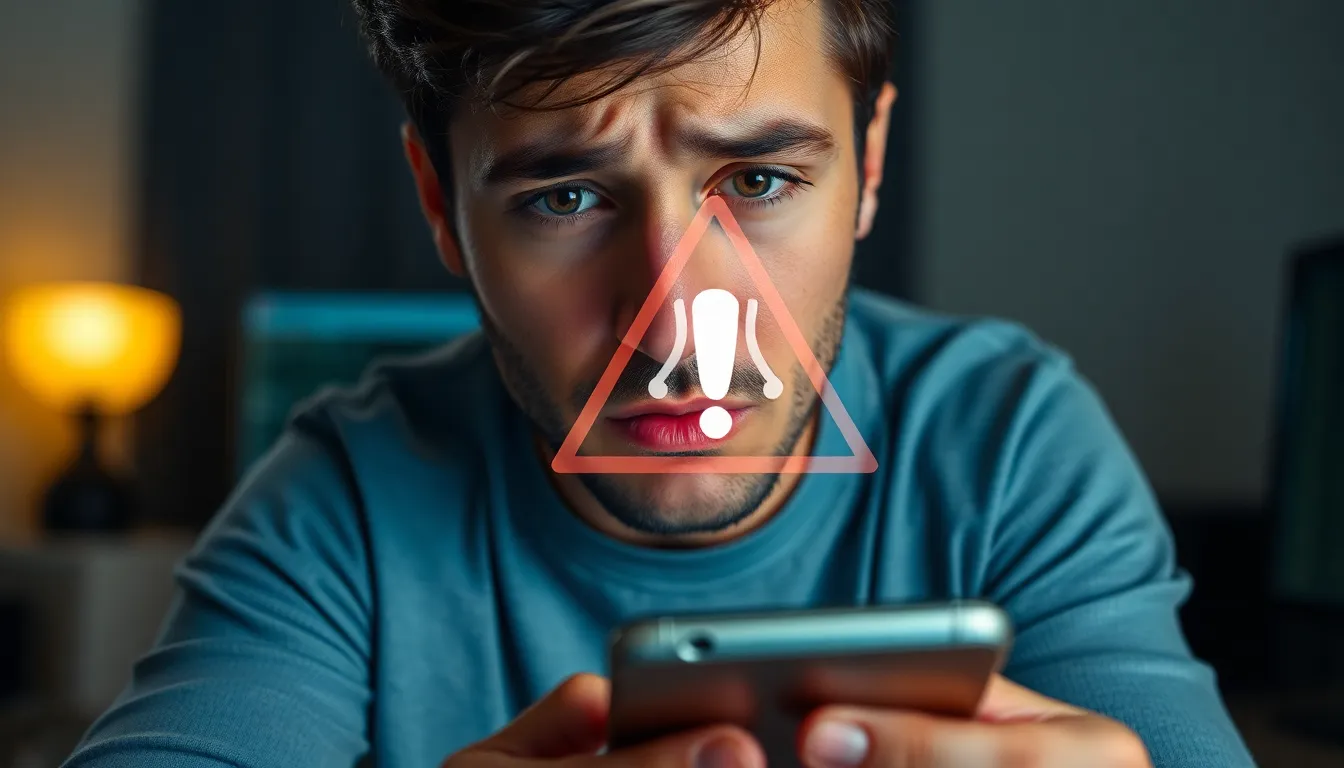Table of Contents
ToggleIn a world where smartphones are practically an extension of ourselves, the last thing anyone wants is a sneaky little malware worming its way into their iPhone. Picture this: your phone’s acting weird, apps are crashing, and you’re suddenly getting ads for pet rocks. Sounds like a bad dream, right? But fear not! Identifying malware on your iPhone doesn’t require a degree in computer science or a crystal ball.
Signs Your iPhone Might Have Malware
Detecting malware presence on an iPhone can be crucial for maintaining device security. Some signs indicate potential infection.
Unexplained Battery Drain
One major sign of malware is unexplained battery drain. If battery longevity decreases significantly without any changes in usage habits, it raises concern. Malware often runs processes in the background, consuming power. Monitoring battery usage statistics can reveal apps that draw excessive energy. Unfamiliar apps showing high usage might indicate infection.
Unusual Data Usage
Unusual data usage serves as another red flag. Users might notice spikes in data consumption, despite habitual usage remaining unchanged. Malware often transmits data to remote servers, increasing mobile data use. Comparing data usage over time can help identify odd patterns. Notifications from the carrier about approaching data limits signal potential issues.
Frequent Crashes and Freezes
Frequent crashes and freezes signal possible malware presence. Applications might shutdown unexpectedly or become unresponsive during typical functions. These indicators often suggest interference from malicious software. Keeping track of how often freezes or crashes occur can help assess device health. Regular functionality should not include repeated disruptions.
Common Sources of Malware on iPhones

Understanding where malware originates helps users take preventive measures. Various sources can compromise the security of iPhones.
Insecure Apps and Downloads
Insecure apps cause significant risks for iPhone users. Third-party app stores often house applications that bypass Apple’s security measures. Malware may lurk within these unsecured apps, leading to harmful access to personal information. Users should prioritize downloading apps from the official Apple App Store only. Always check the app’s reviews and permissions before installation. Additionally, keeping the iPhone’s operating system up to date reinforces built-in security features, minimizing vulnerability to malware.
Phishing and Social Engineering Attacks
Phishing attacks target unsuspecting users through deceptive messages and emails. Scammers often impersonate reputable companies to steal sensitive information. Recognizing these tactics helps prevent malware installation. Users must scrutinize links before clicking and refrain from providing personal details to unknown sources. Social engineering also plays a role; attackers may manipulate individuals into downloading malicious software. Both users and enterprises benefit from cultivating a cautious online environment to deter these threats.
How to Check for Malware on Your iPhone
Detecting malware on an iPhone involves using various techniques. Users can take advantage of built-in security features and consider third-party security applications.
Using Built-in Security Features
iPhones come equipped with reliable built-in security features. Users should regularly enable automatic updates for the iOS operating system to ensure protection against vulnerabilities. In addition, activating Face ID or Touch ID adds an extra layer of security. Checking app permissions is crucial; users can view app access by navigating to Settings, tapping on Privacy, and examining which data apps use. Monitoring settings for unusual changes often reveals potential malware. If strange apps appear that weren’t downloaded, deleting them immediately is wise. These features collectively help maintain the health of the device.
What Third-party Security Apps Can Do
Third-party security apps enhance the protection of an iPhone. Many applications actively scan for malware and identify potential threats. Some tools provide real-time monitoring for suspicious activities. Users can access additional features such as web protection and anti-phishing capabilities with these apps. Investigating and reading reviews before downloading any security app ensures reliability and effectiveness. Trusted names like Norton and McAfee offer comprehensive solutions for mobile protection. While these apps don’t guarantee complete security, they significantly bolster the device’s defenses against malware.
Steps to Remove Malware from Your iPhone
Removing malware from an iPhone involves several straightforward steps. Following these steps ensures the device returns to a normal, functioning state.
Resetting Your iPhone
Performing a factory reset is an effective way to eliminate malware. This process restores the device to its original settings, removing all apps and data. To initiate a reset, navigate to Settings, then General, and select Transfer or Reset iPhone. Opt for Erase All Content and Settings, and confirm the action. This step deletes any malicious software present. Backup important data before proceeding, as this process cannot be undone.
Restoring From a Backup
Restoring from a trusted backup can also help remove malware. Ensure the backup occurred before the infection emerged. Access Settings, tap on your name, then iCloud, followed by Manage Storage. Here, users can view their backups and select the appropriate one. After selecting the backup, return to Settings, choose General, then Reset, and tap Erase All Content and Settings. After the reset, follow on-screen instructions and select Restore from iCloud Backup. This action reinstates the device without the malware.
Staying vigilant about iPhone security is essential in today’s digital landscape. By recognizing the signs of malware and understanding how it can infiltrate devices, users can take proactive measures to protect themselves. Regularly monitoring app behavior and data usage can help identify potential threats early on.
Implementing built-in security features and keeping software updated further enhances protection. If malware is detected, knowing how to effectively remove it ensures the device remains secure. By adopting these practices, users can enjoy a safer and more reliable smartphone experience.




